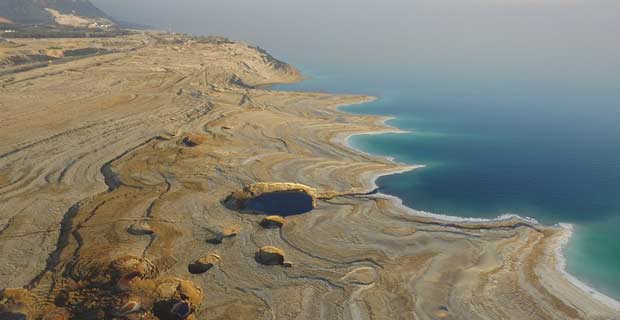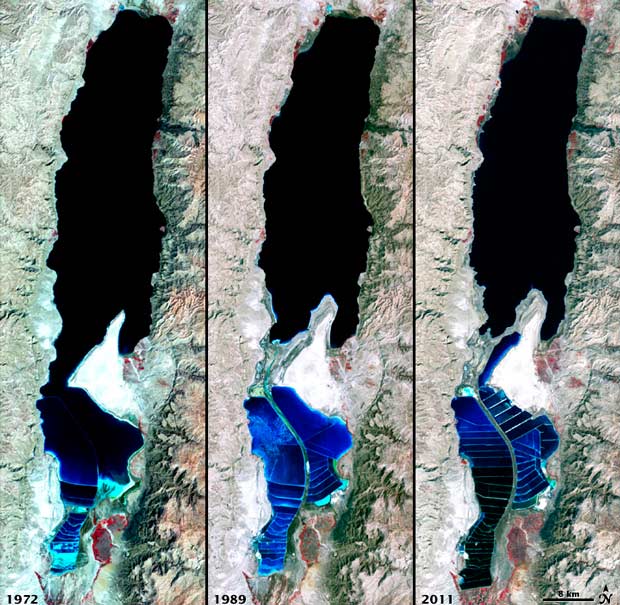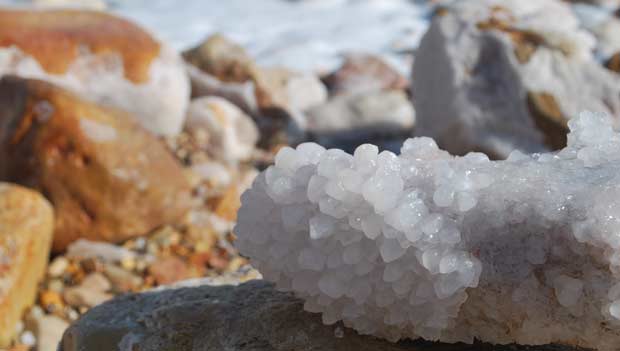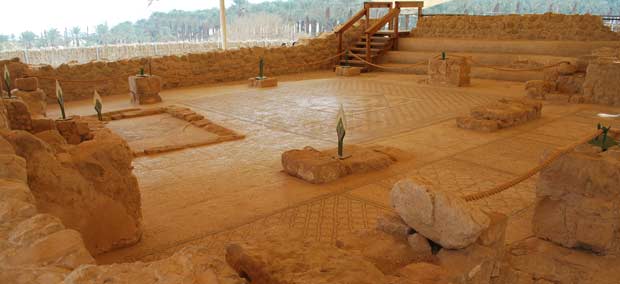Check out our shop where you can purchase tours! Learn More
In English, and in many other languages, the name came to be the ‘Dead Sea’ but in Hebrew and in the Bible it is called either the Salt Sea or the Eastern Sea. The Romans were the first to call it the Dead Sea and they were wrong on two counts – it is not a sea, but a lake, and it is not dead. Although there are no fish in it, the salty water teems with bacteria and microbial fungi. This is not new information. In 1936, Benjamin Elazari Volcani, an Israeli biologist, found an organism called halophilic archaea in the Dead Sea.

When driving along Route 90 from the south of Ein Gedi to Eilat the same desert scenery will accompany you the whole way, but you will actually be passing through two different deserts. The Negev is part of the subtropical ridge around the latitude of 30˚N and part of the deserts in Egypt, Marocco, Jordan, etc. The Judaean desert, on the other hand, is a small, local, rain shadow desert. Moist air coming from the Mediterranean Sea collides with the Jerusalem mountains and rises upward. The quickly ascending air cools down, and the moisture forms clouds that rain upon Jerusalem. After the clouds pass over the mountain peaks, they descend, grow warmer and the moisture they carry with them evaporates. The line running between Arad and Beer Sheva is considered to be the invisible border between the two deserts.
The Dead Sea is salty. The percentage of salt is about 34% – ten times higher than that of the ocean. There are two lakes that are saltier then the Dead Sea: Lake Assai in Djibouti and Garabogazköl in Turkmenistan, where the salt percentage is 35%. The water is so dense that people can float on it.
The Dead Sea is divided into two parts – the northern part, which is the natural sea, and the southern part, which is divided into artificial pools belonging to the Dead Sea Works. Bromine, potash, magnesium and other minerals are harvested from the pools. The northern part loses more than a meter of height every year for two reasons – Israel dams the Jordan River waters south of the Sea of Galilee and so the main water source, the Jordan River, is almost dry. The second reason is that the Dead Sea Works pumps up the water from the northern part and redistributes it to the pools in the south. In the pools the salt sinks and the water level rises.

The seafront hotels in Ein Bokek and Neve Zohar are all located in the southern part, next to pool number 5. The water level is getting higher and higher, meaning the hotels will encounter a major problem in years to come.
For thousands of years the Dead Sea would spit up large chunks of asphalt, also known as bitumen. There was competition to spot this valuable resource and get to it first. Today most people think of roads when they hear the word asphalt, but in the ancient world it was used for many other purposes. It was used as medicine, as well as a means of embalming the dead and of sealing boats. Dead Sea asphalt was considered to be of the highest quality, and in Roman writings it was also referred to as Jewish asphalt. In recent decades the Dead Sea has stopped producing asphalt; the last time it happened was in 1970. One theory is that large quantities of salt at the bottom of the sea block the asphalt. Another theory is that a connection exists between earthquakes and asphalt, and in recent decades there haven’t been any major earthquakes in the region.

The mosaic floor of the ancient synagogue in Ein Gedi bears the warning that he who reveals the secret of the town will be cursed. The secret is probably the making of the persimmon oil, which was a very expensive perfume. The threat was effective – today it’s not clear what kind of plant it was and how they produced the oil. Persimmon orchards were very valuable and many conflicts revolved around them. Cleopatra wanted to get her hands on the orchard and so she used her romantic relationship with Mark Antony to transfer ownership from King Herod to herself. It is likely that, although they had already crushed the rebellion in Jerusalem, the Romans came all the way to Masada with a thousand soldiers not to fight the small group of rebels (74 CE) but in order to protect the persimmon orchard. Sixty years later, during the Bar Kokhba revolt (132-135 CE), the rebels destroyed the orchard, causing the Romans a great deal of damage.
With the Arab conquest of the Middle East in the 7th century there came new trade paths from the Far East and cheaper perfumes and incense in Europe. Although the ancient knowledge was lost, in recent years researchers have identified this ancient persimmon as an African plant called Commiphora gileadensis and have tried to grow it in Ein Gedi and to the north of the Dead Sea.

When driving in the Judaean Desert you won’t come across many settlements. The desert is a harsh place to live in. Those who did dwell in the desert did so mostly through a connection to Jerusalem. Its proximity to Jerusalem made the Judaean Desert the desert of the holy city: King David escaped to Ein Gedi; King Herod build a fortress in the desert; the Essenes turned their backs on corruption in the Temple and settled in Qumran; the Jewish rebels in the Bar Kokhba revolt used the same fortresses that King Herod built, and the Christian monks lived in caves in the cliffs of the Judaean Desert. You can’t understand the human history of the Judaean Desert without understanding the political, religious and economic situation in Jerusalem.
Until 1947 the two oldest Bibles known to be in existence were about a thousand years old: the Aleppo Codex and the Leningrad Codex. One third of the Dead Sea scrolls were parts of the Bible that were 2,000 years old. The scrolls were preserved thanks to the dry desert weather. The question of who wrote the scrolls is one that keeps many scholars busy. Was it the Essenes? Or the Sadducees? (Two groups of Jews at the time of the second temple.) Or maybe they weren’t written by one group but actually constituted a library from Jerusalem that was hidden before the rebellion? Is there a connection between the writers of the scrolls and the first Christians? There are many theories about the scrolls, but one thing is beyond doubt: the Dead Sea scrolls are one of the most important archeological finds in Israel.
The Judaean Deset – The desert of the holy city
Itinerary Judaean Desert
If you’re planning a trip to Israel and want my team to build you a whole package including luxury hotels, guides and attractions, then you can schedule a call here.
If you’re traveling on a modest budget, you can also purchase my Booklets, in which I basically wrote down everything that I say on my 3 most popular tours: Jerusalem, Tel Aviv, and the Judaean Desert. I also added maps, pictures and graphics which will enable you to be your own guide. The booklets are only sold outside Israel, so order now and come prepared! Or download as a PDF or EPUB (e-book).
+ Discount Codes
…or as a PDF